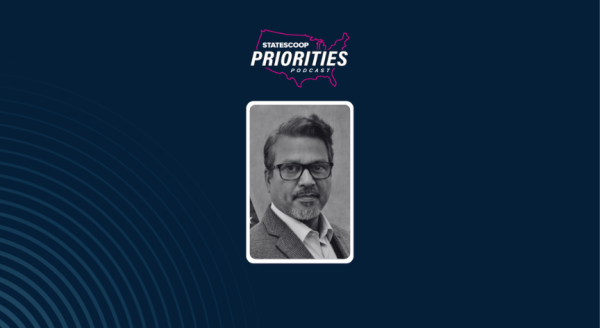
CIOs should use governance, cost savings to urge collaboration
Enterprise information technology governance is about more than just establishing a set of rules and structures for IT gets purchased and used in government, state IT leaders say.
On a new episode of StateScoop’s Priorities podcast, Alabama CIO Jim Purcell says his agency has worked to establish IT governance as a way to bring different agencies together in a way that forces collaboration and eventual cost savings.
“We’ve got several very recent example where the governor’s office has come to my office and said ‘Look, we’ve got multiple agencies asking for budget line items for very similar systems — why don’t you get in the middle of this and go figure out what they’re trying to do?'” Purcell says on the podcast. “Sure enough, it easily could be accomplished in one centrally-hosted system with multiple agencies using it, but they just operate in such silos that the only way, in our opinion, to get them to talk is to get a governance process that’s tied to the purse strings.”
By including finances in the discussion — and by proxy the financial decision makers in the state — the governance process has “teeth,” Purcell says.
“We have an existing governance policy, but [agencies] just kind of ignore it if it doesn’t have any teeth,” Purcell says. “I think the only teeth they care about is the ability to pay for it.”
In Arizona, Doug Lange, the state IT agency’s chief strategy officer, says he struggles even more with establishing governance because of the way the state handles technology.
“When you talk about enterprise IT governance, and you mix that in a federated model, there are a lot of challenges that come with that,” Lange says. “I think for us, it’s not just the concept of enterprise IT governance, but the concept of IT demand governance.”
Lange and his team currently oversee an active statewide portfolio of approximately 60 projects accounting for roughly $460 million of the budget, he says.
“The challenge there? What’s best for one agency versus what’s best for the state as a whole may not be the same thing,” Lange says. “I think with the emergence of public-private partnerships, the cloud in general, software as a service starting to show up more in government, there are very real opportunities to leverage these types of solutions at scale — which means ultimately state agencies need to be in alignment and working together.”
On the podcast:
- Jim Purcell, chief information officer, Alabama
- Doug Lange, chief strategy officer, Arizona Department of Administration
- Jake Williams, associate publisher and director of strategic initiatives, StateScoop
Things to listen for:
- Alabama’s Office of Information Technology was created in 2013 with the purpose of streamlining IT from a cost perspective, but also to eliminate redundancies. Effective enterprise IT governance has helped — and will continue to help — the state do that, Purcell says.
- Lange sees three main challenges to effective enterprise IT governance — scalability, alignment and trust.
- The key to establishing good trust across multiple agencies, Purcell says, is cultural change and ensuring that agencies believe that the information technology office has their best interests at heart.
- Arizona has embarked on an enterprise email and calendar project that will centralize the state on Google and G-Suite. The decision, Lange says, is not one that is a “Microsoft versus Google thing,” but rather that centralization is better for the state overall, instead of having disparate systems.
- To help get agencies on the same page, Arizona’s IT office introduced a statewide strategic planning portal for agencies to submit annual strategic plans in one place. From there, the state IT agency can leverage dashboards and different analytics to identify the biggest opportunities for the state to grow.
Priorities is StateScoop’s podcast chronicling the top 10 priorities of state chief information officers. The show is based on the National Association of State Chief Information Officers’ annual list of top 10 priorities, and produced in partnership with the association.


